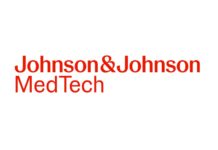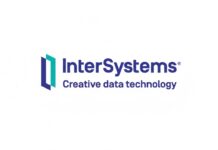Healthcare is evolving at an unprecedented pace. From new medical technologies to ground-breaking treatments, the industry constantly demands fresh strategies to keep up. Behind every successful innovation is a thoughtful plan, crafted not just in labs but also in boardrooms. The intersection of strategy and innovation in healthcare is where ideas transform into real-world solutions, improving patient outcomes while shaping the future of medicine.
In this article, we explore how strategic thinking drives healthcare innovation, highlight examples of mergers and acquisitions, and examine the broader impact on the industry.
The Role of Strategy in Healthcare Innovation
Strategy in healthcare is not just about long-term planning; it is about aligning resources, talent, and technology to solve pressing challenges. Healthcare organizations face complex problems—from rising costs to shifting regulations—requiring decisions that balance risk with opportunity.
Strategic thinking ensures that innovations are not only technically feasible but also economically viable. It helps organizations identify gaps in care delivery, optimize operational workflows, and forecast emerging trends. A strong strategy acts as a compass, guiding investments in research, technology adoption, and talent development.
For example, hospitals seeking to implement AI-driven diagnostics must plan beyond the technology itself. They need to consider integration with existing electronic health record systems, training for medical staff, and patient acceptance. Without a clear strategy, even the most advanced innovation may fail to deliver meaningful results.
Mergers and Acquisitions: Expanding Horizons
One area where strategy and innovation intersect is in mergers and acquisitions (M&A). Healthcare organizations frequently use M&A to accelerate growth, acquire cutting-edge technologies, or expand geographic reach. For example, a hospital system might acquire a telehealth start-up to rapidly integrate virtual care into its services.
Understanding the complexities of such transactions requires familiarity with healthcare M&A terminology and definitions. Terms like “due diligence,” “integration planning,” and “synergy realization” are more than jargon—they are critical tools for ensuring that the merger delivers both strategic and operational value. Many organizations rely on professional healthcare M&A advisory and consulting to navigate these challenges and maximize the impact of their deals.
Beyond financial considerations, M&A in healthcare often involves aligning cultures, standardizing clinical practices, and maintaining patient trust. Done right, mergers can catalyze innovation, combining resources to fund research initiatives, expand specialized care, and deploy advanced technologies at scale.
From Boardroom Decisions to Patient Outcomes
While strategy is crafted in executive meetings, the real measure of success lies at the bedside. Innovations such as telemedicine platforms, wearable health monitors, and personalized treatment plans directly impact patient care. The bridge between executive decisions and frontline outcomes requires careful coordination.
Consider the rollout of remote patient monitoring systems. Executives must determine which departments to prioritize, how to allocate budget, and which vendors to partner with. Simultaneously, clinicians need support to incorporate these tools into their workflows without compromising patient care. When strategy and execution align, the results can be transformative: improved patient engagement, earlier detection of health issues, and reduced hospital readmissions.
This connection emphasizes a key point: strategy without innovation is static, and innovation without strategy is chaotic. The healthcare ecosystem thrives when these forces operate in tandem.
Driving Innovation Through Technology
Technology is the heartbeat of modern healthcare innovation. From AI-powered diagnostics to robotic surgery, technological advancements are transforming how care is delivered. Strategy plays a pivotal role in selecting and implementing these technologies effectively.
For instance, integrating predictive analytics into hospital operations can reduce patient wait times and optimize resource allocation. Yet, the deployment requires strategic foresight: data security must be ensured, staff must be trained, and workflows adjusted to maximize benefits.
Another area of innovation is precision medicine, which tailors treatments to individual genetic profiles. The promise is enormous, but without strategic alignment, hospitals may struggle to manage costs, interpret complex data, or coordinate multidisciplinary care teams. A structured approach ensures that technological innovation translates into tangible improvements for patients.
Collaborative Ecosystems: Partnerships That Matter
Healthcare innovation rarely happens in isolation. Collaborative partnerships between hospitals, research institutions, start-ups, and even tech giants are essential for progress. These collaborations often emerge from strategic imperatives: filling gaps in expertise, accelerating product development, or expanding market reach.
Consider a partnership between a biotech company and a major healthcare provider to develop new immunotherapies. Each party contributes unique strengths—scientific research from the biotech firm, clinical expertise from the hospital—and strategy dictates how resources, responsibilities, and outcomes are shared.
Such ecosystems also foster cross-pollination of ideas. Clinicians can influence product development with real-world insights, while technologists gain a deeper understanding of patient needs. The result is innovation that is both practical and patient-centric.
Measuring Success: Metrics and Outcomes
Strategy and innovation must be measurable to ensure sustained impact. Metrics in healthcare range from patient outcomes and cost reductions to market growth and technological adoption rates. Hospitals and healthcare organizations increasingly rely on data-driven dashboards to track performance and inform future decisions.
Patient satisfaction, readmission rates, and treatment efficacy are core indicators that connect boardroom decisions to bedside realities. Operational metrics such as staff efficiency, resource utilization, and technology adoption rates reveal whether strategic plans are effectively executed.
Regular evaluation allows organizations to pivot when necessary, ensuring that innovation does not stagnate and that resources are directed where they yield the highest value.
Challenges in Aligning Strategy and Innovation
Despite the potential, aligning strategy with innovation is not without obstacles. Resistance to change, budget constraints, regulatory compliance, and the pace of technological evolution can all hinder progress. Healthcare leaders must navigate these complexities with clarity and flexibility.
A key challenge is balancing short-term operational demands with long-term innovation goals. Executives often face pressure to improve current performance while simultaneously investing in future capabilities. Without careful planning, one can overshadow the other, leading to missed opportunities or unsustainable growth.
Looking Ahead: The Future of Healthcare Strategy
The future of healthcare will continue to be defined by the interplay of strategy and innovation. Organizations that integrate these two forces effectively will not only thrive in a competitive landscape but also deliver meaningful improvements in patient care.
Emerging trends such as AI-driven diagnostics, digital therapeutics, and patient-centered care models suggest that healthcare will become increasingly interconnected and data-driven. Strategic foresight, combined with a culture that embraces innovation, will be the key differentiator for healthcare organizations aiming to make a lasting impact.
Conclusion
From boardroom discussions to bedside applications, the fusion of strategy and innovation drives healthcare forward. Thoughtful planning ensures that ground-breaking technologies, partnerships, and organizational changes translate into real benefits for patients. By understanding the dynamics of strategy, embracing technology, and fostering collaboration, healthcare organizations can navigate a complex landscape with purpose and precision. In the end, it is this careful alignment that transforms visionary ideas into tangible improvements, shaping a healthier future for all.


















